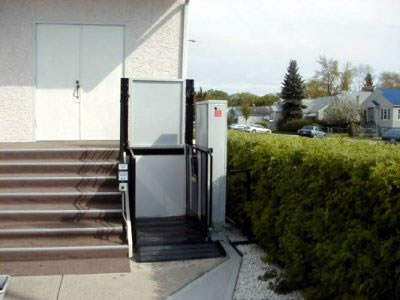 Since the start of the Americans with Disabilities Act (ADA) in 1991, more and more public areas have opened up to those who have to use wheelchairs and other mobility aids. Many structures that were off-limits to those unable to climb stairs now have convenient ramps so everyone can have access. There are some buildings that still aren't handicapped accessible, even though they should be. Others are essentially exempt from the ADA's accessibility laws.
Since the start of the Americans with Disabilities Act (ADA) in 1991, more and more public areas have opened up to those who have to use wheelchairs and other mobility aids. Many structures that were off-limits to those unable to climb stairs now have convenient ramps so everyone can have access. There are some buildings that still aren't handicapped accessible, even though they should be. Others are essentially exempt from the ADA's accessibility laws.
Many people believe that the federal requirements mean that every building that has steps must also have an elevator or ramp. Unfortunately, this isn't the case. The ADA specifically says that buildings with less than 3 stories, or less than 3000 feet per story, aren't required to provide elevators. The exceptions are for buildings that contain stores, professional offices, or physician offices, or that are used for the purposes of public transportation. Those would be required to install an elevator, regardless of their size.
Buildings that fall under the elevator exemption are still required to provide access to the ground floor, such as a vertical wheelchair lift at the entryway. If this is structurally impossible, then the building may be exempt from the federal accessibility rules.
It's worth noting that these requirements are for new and altered buildings. A newly constructed building would have to carefully follow all of the ADA's guidelines for accessibility. Existing structures have a slightly different set of rules. If adapting the existing building to make it accessible would be so involved and expensive that it would cause the owner of the building a great financial hardship, the changes do not have to be made.
Very often, some changes are possible that won't cause a hardship, however. If the installation of a full-service elevator is too expensive, a vertical wheelchair lift or inclined platform lift could be a more cost-effective and still acceptable option. Much of this will depend on the architecture of the place of business and where the lifts will be used.
Some buildings just aren't architecturally set up to allow for the installation of an elevator. The ADA takes that into account. If the way the building is constructed won't allow for any type of elevator or vertical lift, and remodeling would be so extensive that it's not an option, then the changes simply can't be made. In such a situation, the ADA does state that even though the building, or the upper levels, won't be wheelchair accessible, people with other disabilities should still be able to access the whole building. A vertical wheelchair lift is often the most cost-effective solution to such a requirement.
The general guideline in the ADA is that every public and commercial building must become handicapped accessible to the maximum extent reasonable. That may vary from building to building, and even from floor to floor within the same building.
USM works closely with residential customers, contractors, and business owners to ensure that their vertical wheelchair lift installations will comply with federal, state, and local codes governing accessibility solutions and building modifications. Call 1 (800) 647-0916 and we will put you in touch with a wheelchair lift specialist who can answer all of your questions and help you coordinate your lift installation. Because codes and ordinances will vary between locales, we recommend contacting the government offices that oversee elevator and lift installations in your state and city prior to calling our specialists, in order to obtain any applicable code requirements for your area.
$0.00
View Cart
